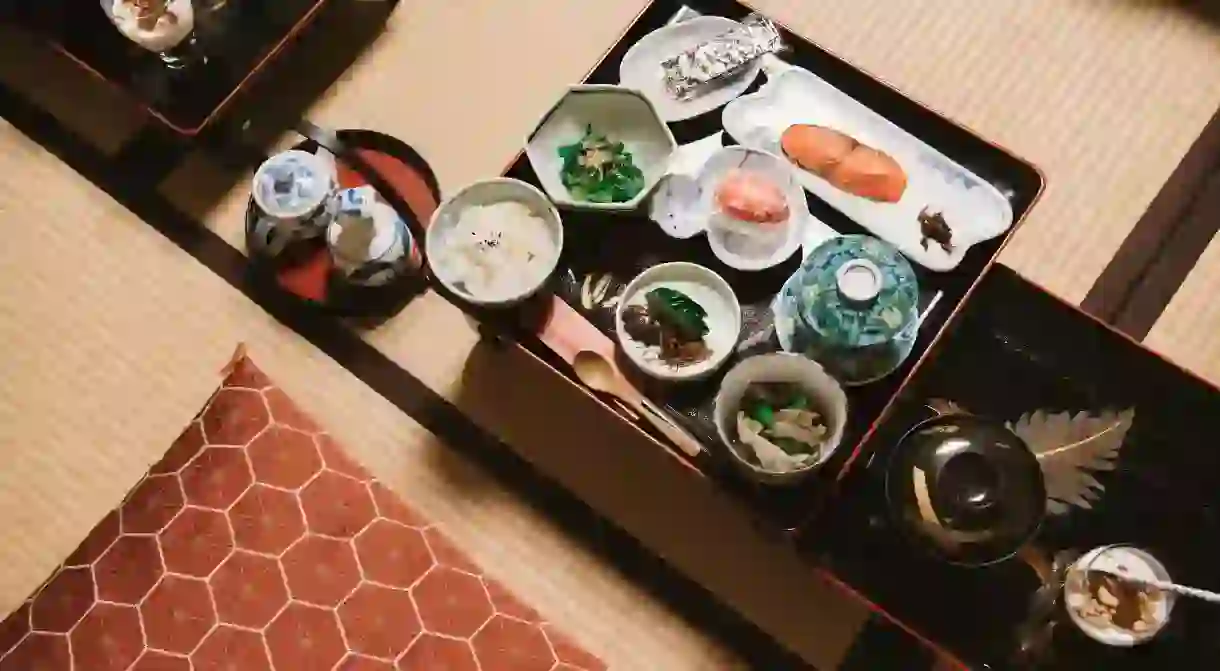The Essential Guide to Kaiseki – Japan’s Unique Dining Experience

Kaiseki ryori is a sophisticated Japanese haute cuisine with its origins in the delicacies offered to the imperial court. This artful Japanese approach to food uses both regional and seasonal ingredients, as well as harmony and balance, to create the perfect meal to appeal to all of the senses.
Did you know – Culture Trip now does bookable, small-group trips? Pick from authentic, immersive Epic Trips, compact and action-packed Mini Trips and sparkling, expansive Sailing Trips.
What is kaiseki cuisine?

Kaiseki is a traditional Japanese dining experience involving multiple courses. It is known for its meticulous preparation, fresh seasonal ingredients and beautiful artistic presentation. Each kaiseki meal is a work of art, and is created at the discretion of a master chef who works with complete freedom and no specific formula in place. It is designed to create a perfect balance and harmony of taste, texture, colour and appearance.
The history of kaiseki

Kaiseki’s origins are centuries old and rooted in the simple meals served at the tea ceremony, later evolving into an elaborate dining style popular among the nobility and Japan’s elite. Modern kaiseki draws on traditional Japanese haute cuisine such as: imperial court cuisine from the 9th-century Heian Period; Buddhist cuisine from temples from the 12th-century Kamakura Period; samurai warrior cuisine from the 14th-century Muromachi Period; and tea-ceremony cuisine from the 15th century of the Higashiyama culture of the Muromachi Period.
All of these unique individual cuisines were formalised and developed over time, and continue in some form to the present day. These individual cuisines have been incorporated into kaiseki at the chef’s discretion. Some chefs focus more on the court and samurai cuisine, which is more ornate, while others place more emphasis on temple- and tea-ceremony cuisine, which is more refined and restrained.
What dishes make up kaiseki?

In the present day, kaiseki is an art form that finely balances taste, texture, appearance and colour. Fresh seasonal ingredients are used and prepared in such a way as to truly bring out their natural flavours. Local regional ingredients provide a seasonal theme to the meal. The final product is carefully presented on plates, with the meal beautifully arranged and garnished to appeal both to the eyes as well as to the palate.
Originally, kaiseki comprised a bowl of miso soup and three side dishes. In modern times, it has evolved to include an appetizer, sashimi, a simmered dish, a grilled dish and a steamed dish, in addition to other dishes at the discretion of the chef. Here is a breakdown of a typical kaiseki meal:
Sakizuke – an appetizer (often a bite-sized hors d’œuvre) served with sake
Hassun – the second course, usually seasonal, which sets the theme of the meal
Mukozuke – seasonal sashimi
Takiawase – vegetables served with fish, meat or tofu
Futamono – typically a soup
Yakimono – grilled seasonal fish
Su-zakana – a small vinegar-based dish used to clean the palate
Hiyashi-bachi – chilled, lightly cooked vegetables served only in summer
Naka-choko – a small, acidic-tasting soup, used as another palate-cleanser
Shiizakana – main dish such as a hot pot
Gohan – a rice dish made with seasonal ingredients
Ko no mono – seasonal pickled vegetables
Tome-wan – a basic offering of miso soup served with rice
Mizumono – a seasonal dessert of fruit, confection or cake
Kaiseki etiquette
Kaiseki is the most refined form of Japanese dining and as such requires the highest level of etiquette. A few of the basic formalities include showing the proper respect before the meal. Thank the chef by saying, ‘Arigatogozaimashita – itadakimasu’ (Thank you – let’s eat). Make sure to use the chopsticks correctly, never poking or cutting food into smaller pieces with them. Only use them to pick up food to eat, and when you are finished eating, gently place them on the hashi-oki (chopstick rest) when not in use. The oshibori (towel) should only be used exclusively for wiping hands and never for wiping the table or cleaning up spills. Remember to show thanks to the chef at the end of the meal by saying, ‘gochiso sama deshita’ (thank you for the meal).
Where to eat kaiseki in Kyoto
Kyoto is famous for its kaiseki, since it was the home of the imperial court and nobility for over a millennium. There are many places to try kaiseki in Kyoto, from top-class restaurants such as Kyoto Kitcho Arashiyama, a famous, well-established kaiseki restaurant in the Arashiyama district, to more reasonably priced establishments and ryokan (traditional inns). A good affordable restaurant to gently ease into the world of kaiseki is Gion Karyo, situated in the historic Gion district of Kyoto. The restaurant is set in an atmospheric old Kyoto house, and offers authentic traditional kaiseki with English menus and English-speaking staff available.
Kaiseki is not cheap, with one meal costing up to 20,000 yen (US$175), but it is a worthwhile experience to sample some authentic traditional Japanese cuisine. No trip to Kyoto is complete without a kaiseki meal.













